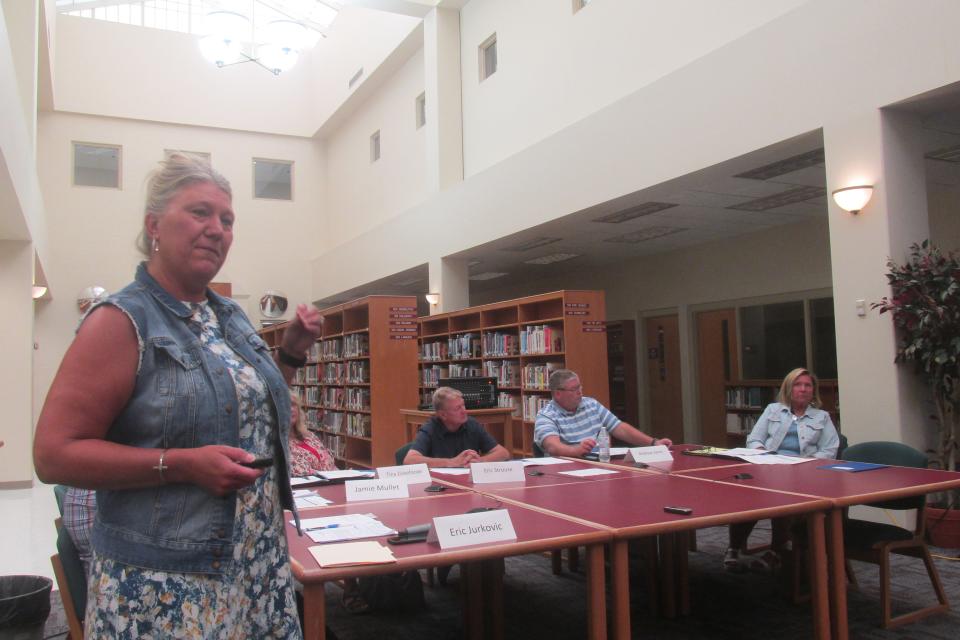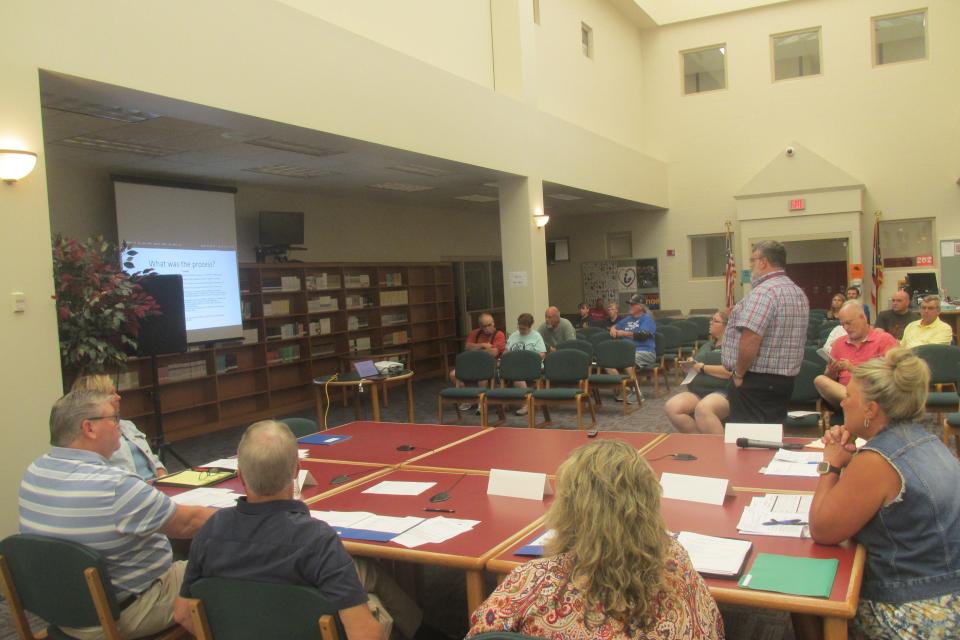West Holmes finds a way to build new elementary school building without raising taxes
MONROE TOWNSHIP — After months of public meetings where West Holmes Superintendent Eric Jurkovic, Treasurer Jamie Mullet and members of the building and grounds committee shared their findings and plans for the future of the district and the need for new facilities, the administrators heard what was being said.
Residents in the district said over and over again that they could not afford more taxes.
So Mullet and Jurkovic went back to the drawing board, got creative, began thinking outside the box, and came up with a new plan that moves money from operating funds to permanent improvements to finance a new Kindergarten through Grade 5 building.
The superintendent and treasurer shared a plan to reallocate millage, which transfers 2.9 mills from operating to permanent improvements. The district will also stop collection on two operating levies and an expiring bond issue of 3.72 mills which will actually create a tax decrease. The 2024 annual tax bill will decrease $25 per $100,000 in property value if no improvements/buildings were added to property in 2023.

"I'm very excited. This is a huge step, a great opportunity for West Holmes and a great opportunity for the community and the county," Mullet said. "Going through this process, I felt like, is this possible, is it believable, because districts have moved inside millage, but they haven't coupled it with the dropping of other taxes.
"This is like the perfect period in time," she continued. "It's multiple things, because A: we have a bond issue coming up; B: we're not in a reappraisal year; and many years ago, we did things at the recommendation of (former West Holmes Superintendent) Dick Maxwell and others in the state as far as not messing with 20-mill floors. The fact that we can do this and not have an increase is huge. This is an awesome time for West Holmes."
Inside millage explained
The treasurer explained inside millage. Every county has 10 inside mills, and so many of those were allocated to school districts. East and West Holmes Schools each get 4 1/2 mills.
"Currently today, we have our 18.4-mill continuing levy that was passed in 1976," she said. That levy has been rolled back to 15 1/2 mills, adding to the 4 1/2 mills we are at the 20-mill floor. That means we get growth on property tax increases. When the reappraisal happened, we got an increase. When tri-annual updates happened, we got an increase.
"Looking at an alternative method to reduce the burden to our tax payers, we're looking at converting 2.9 of these inside mills to permanent improvement," she continued. "It keeps the 1.6 mills there to maintain our 20 mills for our operating income budget."
Mullet added that she conservatively estimates the district would also save about $1.3 million in operating expenses by consolidating all the elementary schools into one building. The savings would come through utilities for one building as opposed to four and through staffing.

Getting the most out of current buildings
"We've taken away the people who did not want us to move forward; the next part is what are we going to do with the elementary buildings," Jurkovic said. "We have two options: we can auction the whole building off like they did with Clark, or demolish it and auction the property. There's about 25 acres with all the property. But that wouldn't happen for three to four years down the road once we got everybody into the new building."
Mullet noted the most difficult part of this process is dealing with the communities that will be closing down their schools. She found a philosophical point of view that the buildings were built more than 100 years ago and they are not designed for today's education.
"We've done an awesome job of using the buildings and making them the best they can be, but coming together in a central campus and the opportunities for kids, it's hard not to look at," she said. "Looking at a footprint for our district, just to be more operationally sound in the future, and not be a burden to our taxpayers."
Cost of consolidation
The move consolidates the remaining four elementary buildings in the district, Millersburg, Killbuck, Lakeville and Nashville, all over 100 years old, into one central location. The estimated cost of construction is currently at $36.5 million, but that could go up over the next year or so before the actual construction begins.
Mullet said the actual cost will probably be higher because the estimate was based on a 2022 cost factor.
The reduction in operating costs will also allow the district to construct a new building without increasing taxes. In fact, it will even result in a decrease in the 2024 tax bill for those who have not added any any structures to their property since the prior year assessment.
Benefits of consolidation
Some of the benefits of the consolidation include:
● Increase time for one to one student care by psychologists, social workers, speech therapists, and school nurse.
● Provide more options for parents for child care by providing bus service outside of their current elementary school area where they are limited to now.
● Safety concerns are minimized with secure entrances and a full-time deputy on campus at all times with modern safety cameras.
● Modern fire safety systems and sprinklers.
● Modern heating and cooling systems with proper air filtration.
● Modern lighting and new classrooms with latest technology to prepare students for the 21st century.
● Provide grade level collaboration and common planning time for improved instruction.
● Centralize resources for art, physical education, and music to allow more classroom time in place of travel time.
● Create a building designed for our special needs students and accessibility to all parts of the building.
● Improve layout of cafeteria, making them more functional and efficient.
● Allow for allocation of building staff to regulate class sizes and improve efficiency of the use of services by personnel.
● Maximizing personnel leads to decreased operating costs and increased services (regular, special, and gifted) with three buildings closer in proximity.
● Decrease overall utility expenses, maintenance costs, and operating expenses required of one versus four buildings.
This article originally appeared on The Daily Record: West Holmes finds a way to build new building without raising taxes

